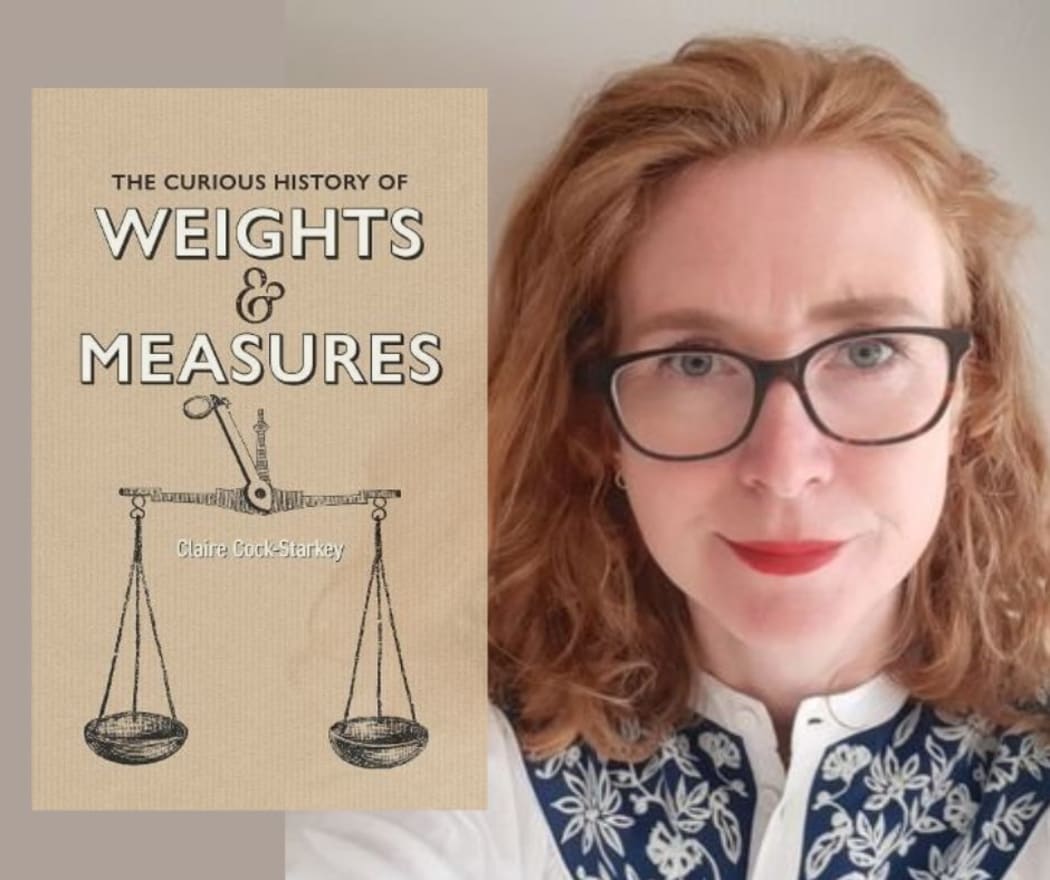When they say in recipes to add a dash of salt or a pinch of salt; how much is that, exactly? How about a dollop, a drizzle of olive oil or a smidgeon?
Believe it or not, a smidgeon is actually a precise measurement. Many of these words are.
Claire Cock-Starkey has made a name for herself writing books of curiosities: about hyphens and hashtags, how they regarded death in mediaeval England, and ancient Egyptian hieroglyphs. Two of her previous titles have been How to Skin a Lion and Penguins, Pineapples and Pangolins.
She's turned her focus to a more prosaic, but no less interesting, topic in her new book, The Curious History of Weights & Measures.
We've inherited a bewildering array of weights and measures from Victorian Britain, she says, that persist in common usage despite metrification.
“We had the whole metrification thing where we were meant to stop using feet, inches yards, all those kind of old Victorian, older than Victorian even, measures but it's really hard to give up on them if that's what you're used to.
“I still always give my height in feet and inches. And I just find it much easier to envision height like that.”

Photo: Clare Cock-Starkey
Ton is a very old measure of weight, she says.
"But now is a different actual weight than it was originally. The word actually comes from tun, which was the biggest wine cask. And that was basically the biggest amount anyone at that time could imagine as a weighing measurement.”
Tonne now has a precise weight, she says.
“It's strictly 1000 kilograms, it's got an official weight, but back in early times, it was less, anything that was massive, was a ton.”
This was true of most weights, which tended to be localised, she says.
“So, for example, with the stone, it was literally just the local stone. In your village, you'd find a good sized stone, you'd be like, right, this is the one that we're going to weigh everything against. And this is our stone.
“But obviously, each village would find their own stone, and their stones would not be the same weight. And so that's why it ended up across nations, villages, we had all different amounts for a stone, it wasn't at all standardised.”
As economies grew and trading areas expanded this needed to be sorted out, Cock-Starkey says.
“That kind of didn't come in until really the Victorian era. And that's when we've really got most of our rules about measurement from.”
Even more nebulous are the pinches, dollops and dashes described in recipe books, she says.
“I mean, personally, I like having that leeway. I like being able to do a generous dash when I'm using wine and a slightly less generous dash when I'm using vinegar.
“I think it kind of gives you that artistic license as a cook to kind of either throw in loads or like barely put any in at all.”
Americans are less relaxed and have codified what, for example, a smidgen is, she says.
“A smidgen is 132th of a teaspoon, which I can't even imagine what that looks like, but it's tiny.
“So, I think I'll stick to the imprecise idea of a smidgen is just a tiny drip.”
The root of smidgen is the Scottish word smitch, she says, meaning a very small amount.
"Lots of things that are very small, start with sm; small, smithereen, smidgen, smudge - so it's the sm sound that is the root of lots of small things.”
Dash and dollop are all about the feel, she says.
“A dash of wine would be quite a long pour, whereas a dollop I think is more kind of thicker things like mayonnaise. Again, to me quite big like a teaspoonful
“Drizzle, is very small amount, I would personally say like, you know, just a drizzle of olive oil.”
A pinch is more precise, however.
“It is the amount you can hold between your finger and thumb, so depending on the size of your finger and thumb.
“So, for some people, a pinch of salt might be quite a large amount, but for me, it's quite small."

